Contents
Guide
Thank you for downloading this Simon & Schuster ebook.
Get a FREE ebook when you join our mailing list. Plus, get updates on new releases, deals, recommended reads, and more from Simon & Schuster. Click below to sign up and see terms and conditions.
CLICK HERE TO SIGN UP
Already a subscriber? Provide your email again so we can register this ebook and send you more of what you like to read. You will continue to receive exclusive offers in your inbox.
We hope you enjoyed reading this Simon & Schuster ebook.
Get a FREE ebook when you join our mailing list. Plus, get updates on new releases, deals, recommended reads, and more from Simon & Schuster. Click below to sign up and see terms and conditions.
CLICK HERE TO SIGN UP
Already a subscriber? Provide your email again so we can register this ebook and send you more of what you like to read. You will continue to receive exclusive offers in your inbox.
Dedication
Always for Erika.
Contents
Introduction
Houseplants have been grown for centuries for their beauty, but something you may not know is that many houseplants, from aloe vera to orchids to popular ferns, also have powerful health benefits for you and your home.
In Houseplants for a Healthy Home , youll find the profiles of fifty different houseplantsfrom the common aloe vera plant to the exotic chocolate oncidium orchidthat boast impressive health-giving qualities. Some of them purify indoor air of harmful toxins. Others are great for making tonics, poultices, and tinctures that can be used to treat all manner of conditions, from stomach upset to skin irritation to blocked sinuses. Each plant has been chosen specifically for its air-purifying power, unique physical features, or medicinal properties.
Each plant is presented in a colorfully illustrated profile that tells you everything you need to know about its health benefits. Profiles also include physical descriptions and size expectationsas well as in-depth information on water, temperature, and light needsplus special growing tips. Best of all, you dont have to be an expert or buy specialized equipment to grow the plants in this book. In most cases, a sunny windowsill, a watering can, and a handful of fertilizer are all you need. And whether youre just starting to keep plants or have been growing them for years, youll find a chapter full of everything you need to know to be successful, including common terms and definitions, information on what you should have on hand, and ten simple rules for successfully growing beautiful and healthy houseplants.
With all this information and more, Houseplants for a Healthy Home is guaranteed to help you gain a green thumband a beautiful, healthy home!
How to Care for Your Houseplants
Before your houseplants can take care of you and your home, you have to take care of them! Fortunately, keeping healthy houseplants isnt complicated. Weve laid out the tools, ten simple rules, and common plant and garden terms for keeping your plants lush all year round.
WHAT TO HAVE ON HAND
Indoor gardening isnt complicated, but there are some important differences between growing plants inside and in an outdoor garden. Indoor plants cant just grow bigger roots to seek out more nutrients when theyre hungry. Your house is also designed for you, not for your plants. This means air-conditioning, lower humidity, and a lack of proper sunlight. But not to worry: with the right tools, you can create a great indoor environment for your houseplants.
MATERIALS
As an indoor gardener youre lucky: you dont need a shed full of special equipment to keep your houseplants thriving. Instead, here are a few helpful tools to keep handy:
 VARIOUS-SIZED CONTAINERS . The most important thing with any indoor container is drainage. You can use clay, plastic, ceramic, or just about any other kind of pot, as long as it provides a way for water to drain out.
VARIOUS-SIZED CONTAINERS . The most important thing with any indoor container is drainage. You can use clay, plastic, ceramic, or just about any other kind of pot, as long as it provides a way for water to drain out.
 A WATERING CAN . Any standard watering can found at your local hardware store will do.
A WATERING CAN . Any standard watering can found at your local hardware store will do.
 GARDEN SHEARS . Kitchen scissors will work for softer plants, but a good pair of sharp shears is ideal. Always keep shears clean.
GARDEN SHEARS . Kitchen scissors will work for softer plants, but a good pair of sharp shears is ideal. Always keep shears clean.
 SPRAY BOTTLES . Consider getting a bottle for misting with pure water and a separate bottle for growth agents like neem oil or foliar feeding. Label your bottles so you dont mix them up.
SPRAY BOTTLES . Consider getting a bottle for misting with pure water and a separate bottle for growth agents like neem oil or foliar feeding. Label your bottles so you dont mix them up.
 GLOVES. These are handy for keeping your hands clean when repotting plants.
GLOVES. These are handy for keeping your hands clean when repotting plants.
FERTILIZERS
The difference between sort-of-healthy houseplants and lush, gorgeous houseplants is fertilizer. Since indoor plants are grown in containers, they rely on you to provide all of their nutrients, especially the big three: nitrogen, phosphorus, and potassium (the NPK on a fertilizer label). There are many products out there that promise their combinations of special vitamins and enzymes are necessary for healthy plants. For the most part, however, a basic fertilizer combined with regular watering and repotting will allow your houseplants to thrive.
Here are a few types of potting soil and fertilizer for well-fed houseplants:
 FORTIFIED POTTING SOIL. Many leading potting soils have fertilizer included. For most common plants, this will be enough food to last for six months, or even a full growing season.
FORTIFIED POTTING SOIL. Many leading potting soils have fertilizer included. For most common plants, this will be enough food to last for six months, or even a full growing season.
 CONTROLLED-RELEASE FERTILIZER PELLETS. A high-quality, controlled-release fertilizer will include the major NPK nutrients, plus a host of micronutrients, and will supply your plants with a continuous food supply for months. Follow the label directions to make sure youre using the right amount.
CONTROLLED-RELEASE FERTILIZER PELLETS. A high-quality, controlled-release fertilizer will include the major NPK nutrients, plus a host of micronutrients, and will supply your plants with a continuous food supply for months. Follow the label directions to make sure youre using the right amount.
 LIQUID FERTILIZER. Many expert growers use liquid fertilizer because its rapidly absorbed, easier to control in terms of dosing, and convenient. Look for one designed for houseplants and follow the label directions. If you really want to make your plants happy, use a little liquid fertilizer with every feeding during the growing season.
LIQUID FERTILIZER. Many expert growers use liquid fertilizer because its rapidly absorbed, easier to control in terms of dosing, and convenient. Look for one designed for houseplants and follow the label directions. If you really want to make your plants happy, use a little liquid fertilizer with every feeding during the growing season.
TEN TIPS FOR GROWING GREAT HOUSEPLANTS
The plants in this book can all be successfully grown indoors without taking any extraordinary measures. Still, if youre new to indoor gardening, it can take a little practice to get the hang of it. To help you out, weve provided a few simple guidelines that will apply to most plants. While each plant profile will have specific instructions for proper care, these are the basics:
1. USE A HIGH-QUALITY POTTING MEDIA. Never use gardening soil for indoor plants. Common dirt is far too heavy and provides poor drainage. A good potting media should include a lightweight base like sphagnum peat moss or coconut coir to retain water, something to add structure like pine bark fines, and something that will increase drainage like perlite. Bagged potting soil might also contain added fertilizer and water-retention crystals, which will hold moisture longer so you dont have to water your plants as frequently.


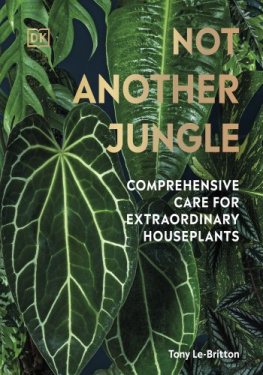
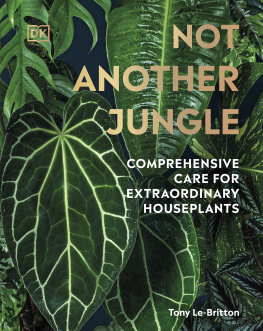
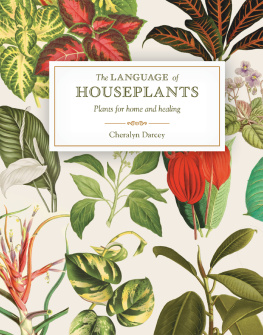
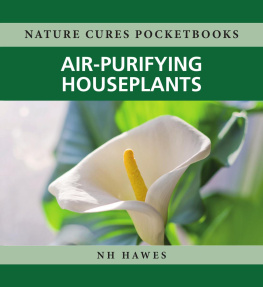
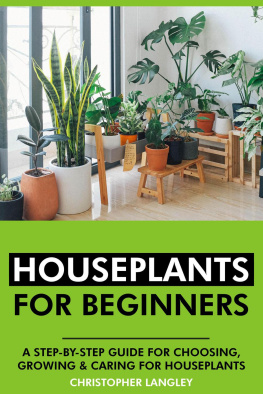
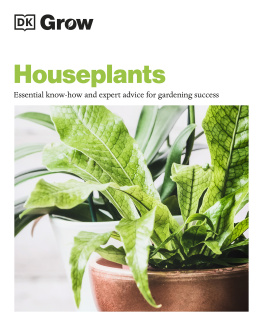

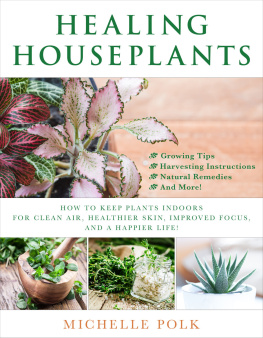
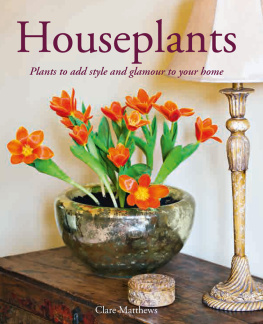
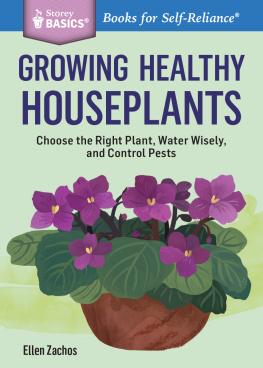
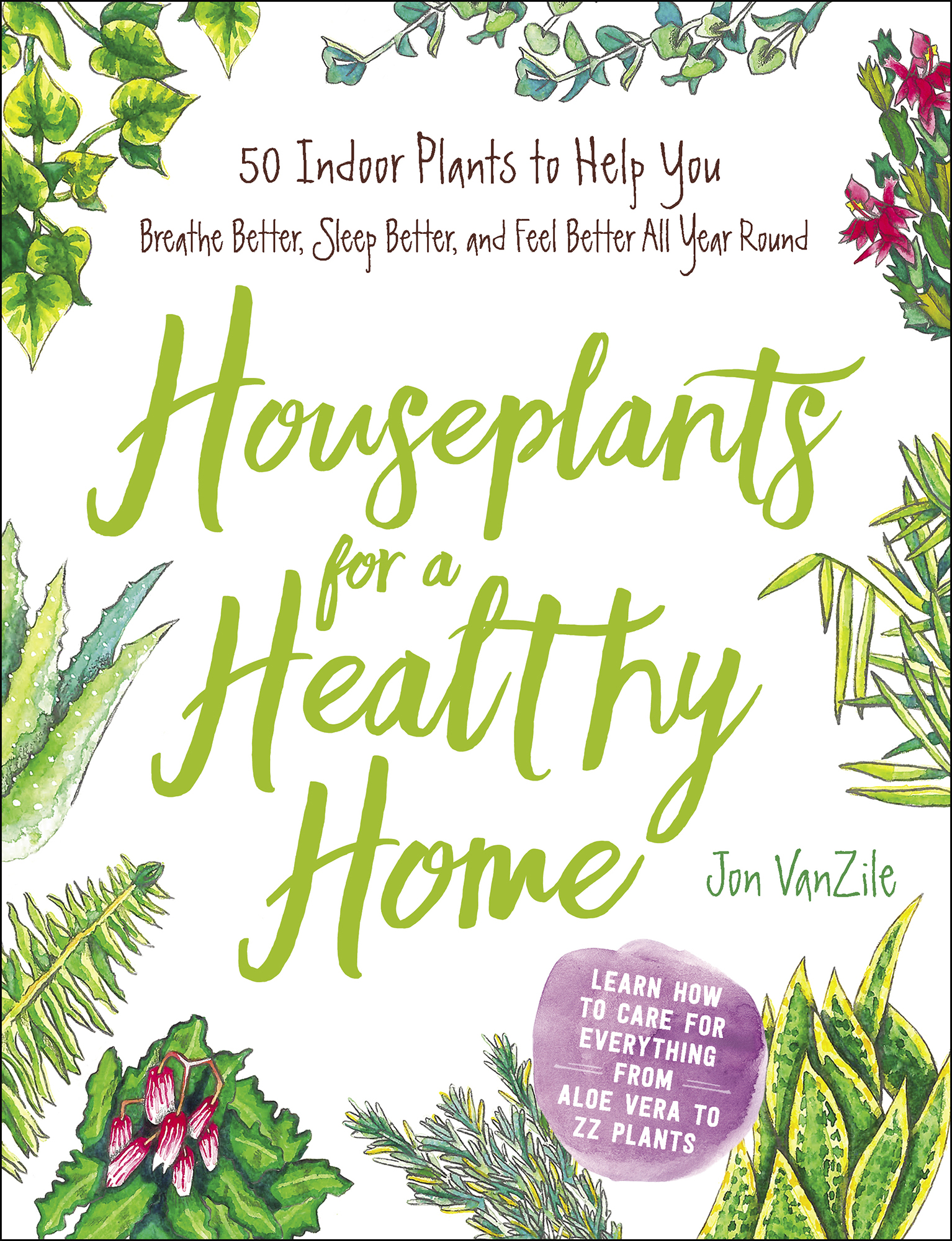

 VARIOUS-SIZED CONTAINERS . The most important thing with any indoor container is drainage. You can use clay, plastic, ceramic, or just about any other kind of pot, as long as it provides a way for water to drain out.
VARIOUS-SIZED CONTAINERS . The most important thing with any indoor container is drainage. You can use clay, plastic, ceramic, or just about any other kind of pot, as long as it provides a way for water to drain out.